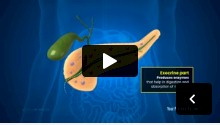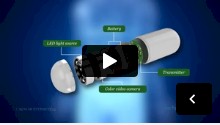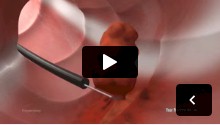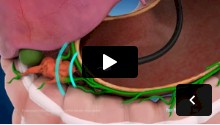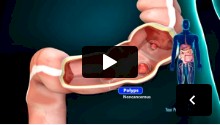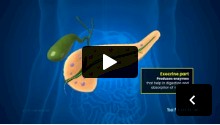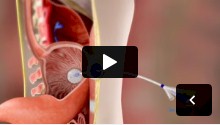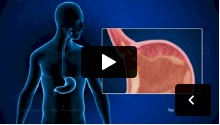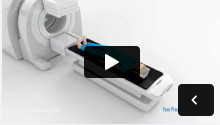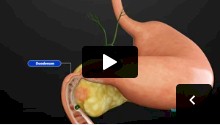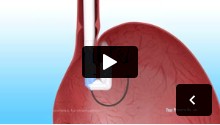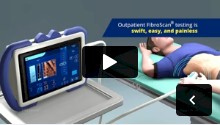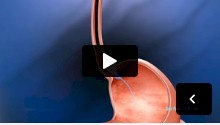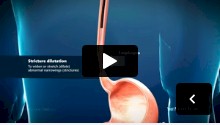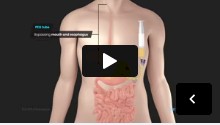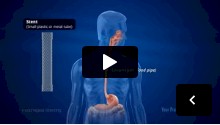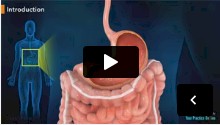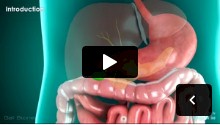Our Services
Colonoscopy is performed to view the rectum and colon, using a colonoscope, which is a long, flexible tube with a camera on the end. Colonoscopy is done to check for colon cancer and other problems in the intestines, as well as to treat and remove polyps. A biopsy can be done during a colonoscopy to look for microscopic evidence of disease.
COLONOSCOPY AGE GUIDELINES
In May 2021, the United States Preventive Task Force (USPSTF) lowered the age recommendation for colorectal cancer screening from 50 to 45 years old. This recommendation applies to average risk, asymptomatic, men and women, ages 45-49, and is supported by the American Cancer Society. The age was lowered to 45 due in part to the rise in incidence of young-onset colorectal cancer. In 2020, 11% of colon cancers and 15% of rectal cancers occurred in patients under the age of 50, which was a notable increase from 5% and 9% in 2010. Additionally, West Virginia has a higher colorectal cancer incidence rate among people under age 50 compared to the US average.
Colorectal cancer is one of the few cancers that can be prevented through screening. If you are over 45 and haven’t had a colonoscopy or it’s been more than 10 years since your last screening, it’s time.
With the procedure known as gastrointestinal endoscopy, we are able to see the inside lining of the digestive tract. This exam is performed using an endoscope – a flexible fiber optic tube with a tiny camera at the end. The camera is connected to either an eyepiece for direct viewing or a video screen that displays the images on a color TV. The endoscope allows for diagnosis of gastrointestinal (GI) disease and treatment.
EGD with stent placement is a procedure used to treat disorders of the gastrointestinal tract. The doctor passes an endoscope (a thin, flexible lighted tube with a camera on the end) through your mouth to inspect the tissue in your esophagus, stomach and duodenum. For many people with a tumor in their esophagus or duodenum, the area may be narrowed and need to be enlarged for food to get through. During the EGD, a hollow, mesh tube called an esophageal or duodenal stent may be placed. A balloon may also be used to expand the esophagus or duodenum during placement. These treatments should allow food to pass through, though occasionally that also can cause discomfort from the esophagus or duodenum stretched.
Paracentesis is a procedure to take out fluid that has collected in the abdomen (peritoneal fluid). This fluid buildup is called ascites. Ascites may be caused by infection, inflammation, injury, or other conditions such as cirrhosis or cancer. The fluid is taken out using a long, thin needle. Then it is sent to a lab and studied to find the cause of the fluid buildup. Paracentesis also may be done to take the fluid out to relieve belly pressure or pain in people with cancer or cirrhosis.
Endoscopic retrograde cholangiopancreatography is an endoscopic technique that is used to examine and treat problems in the bile and pancreatic ducts, and the gallbladder. The bile ducts are channels, analogous to plumbing, that drain bile from the liver and gallbladder; the pancreatic ducts drain the pancreas. Both types of ducts empty into the duodenum, which is the first part of the small intestine.
Esophageal manometry is a swallowing test that can help determine if your esophagus is able to move food to your stomach normally.
EUS is a minimally invasive procedure to assess digestive (gastrointestinal) and lung diseases. A special endoscope uses high-frequency sound waves to produce detailed images of the lining and walls of your digestive tract and chest, nearby organs such as the pancreas and liver, and lymph nodes.
Balloon-assisted enteroscopy is an incisionless procedure to reach and treat less-accessible colon polyps or areas of bleeding in the gastrointestinal (GI) tract. During the procedure, gastroenterologists use flexible, tube-like imaging instruments (endoscopes) to see the area of the body being treated.
EMR is a procedure to remove precancerous, early-stage cancer or other abnormal tissues (lesions) from the digestive tract.
FDA-approved, non-surgical diagnostic test to measure liver scarring or fibrosis caused by liver disease.
The Ambry Genetics® Comprehensive Assessment, Risk and Education program identifies and screens patients for increased risk of hereditary cancer.
Bloating? Heartburn? Gas? Stomach pain? Many people experience common gastrointestinal problems occasionally, like bloating, heartburn, gas and stomach pain, but some of these conditions are more common among women.
Our team provides expert evaluations, diagnoses and treatment for GI conditions and disorders in women. Our highly trained female gastroenterologists have the knowledge, skills and abilities unique to women’s GI health.
ARAT is an endoscopic technique based on mucosal ablation that generates a controlled esophageal stenosis that has showed a decrease in acid exposure time in GERD patients without hiatal hernia.
ESD is an outpatient procedure to remove deep tumors from the gastrointestinal (GI) tract.
Endoscopic suturing uses an endoscope (a flexible, tube-like imaging instrument) equipped with a stitching device to repair problems in the GI tract.
Endoscopic full thickness resection is an outpatient procedure to remove growths deep in the wall of the gastrointestinal tract. The procedure is used to treat tumors without surgery.
POEM is a therapeutic endoscopic procedure to treat achalasia and spastic esophageal disorders not responding to medical therapies.
Common Gastrointestinal Conditions
Irritable bowel syndrome (IBS) is a common disorder that affects the large intestine (colon). IBS commonly causes cramping, abdominal pain, bloating, gas, diarrhea and constipation. IBS is a chronic condition that you will need to manage long term.
Even though signs and symptoms are uncomfortable, IBS – unlike ulcerative colitis and Crohn’s disease, which are forms of inflammatory bowel disease – doesn’t cause changes in bowel tissue or increase your risk of colorectal cancer.
Only a small number of people with irritable bowel syndrome have severe signs and symptoms. Some people can control their symptoms by managing diet, lifestyle and stress. Others will need medication and counseling.
Colorectal (large bowel) cancer is a disease in which malignant (cancer) cells form in the inner lining of the colon or rectum. Together, the colon and rectum make up the large bowel or large intestine. The large intestine is the last segment of the digestive system (the esophagus, stomach and small intestine are the first three sections).
The large bowel’s main job is to reabsorb water from the contents of the intestine so that solid waste can be expelled into the toilet. The first several feet of the large intestine is the colon, and the last 6 inches is the rectum.
Pancreatitis is a condition characterized by abrupt inflammation of the pancreas characterized by swelling and, at times, even destruction of the pancreatic tissue. The most common causes of acute pancreatitis are gallstones and excessive alcohol consumption.
Other causes include smoking, high triglyceride levels, high calcium levels, certain medications, abdominal trauma, viral infections, structural anatomic anomalies and genetic anomalies. Chronic pancreatitis occurs when there is irreversible scar tissue that forms in the pancreas as a result of ongoing inflammation.
Acid reflux is a common condition that features a burning pain, known as heartburn, in the lower chest area. It happens when stomach acid flows back up into the food pipe.
Gastroesophageal reflux disease (GERD) is diagnosed when acid reflux occurs more than twice a week.
Barrett's esophagus is a condition in which the flat pink lining of the swallowing tube that connects the mouth to the stomach (esophagus) becomes damaged by acid reflux, which causes the lining to thicken and become red.
Bile duct obstruction is a blockage in the tubes that carry bile from the liver to the gallbladder and small intestine. When the bile ducts become blocked, bile builds up in the liver, and jaundice (yellow color of the skin) develops due to the increasing level of bilirubin in the blood.
Celiac disease, also called celiac sprue or gluten-sensitive enteropathy, is an immune reaction to eating gluten, which is a protein found in wheat, barley and rye.
If you have celiac disease, eating gluten triggers an immune response in your small intestine. Over time, this reaction damages your small intestine's lining and prevents it from absorbing some nutrients. The intestinal damage often causes diarrhea, fatigue, weight loss, bloating and anemia, and can lead to serious complications.
Cirrhosis is a condition in which your liver is scarred and permanently damaged. Scar tissue replaces healthy liver tissue and prevents your liver from working normally. As cirrhosis gets worse, your liver begins to fail.
Cirrhosis has many signs and symptoms, such as fatigue and severe itchy skin. They may not appear until the liver is badly damaged. Causes include alcoholic liver disease, nonalcoholic fatty liver disease, chronic hepatitis C, and chronic hepatitis B.
Inflammatory bowel disease (IBD) describes disorders that involve chronic inflammation of your digestive tract. Types of IBD include ulcerative colitis and Crohn's disease.
Peptic ulcer disease is when painful sores form in the lining of the stomach, duodenum (start of the small intestine) or bowels. An ulcer can cause belly pain and, in some cases, bleeding or even a hole in the stomach or bowel.
An esophageal stricture is an abnormal tightening or narrowing of the esophagus. Your esophagus is a muscular tube that connects the throat to the stomach, carrying food and liquid. A stricture narrows the esophagus, making it more difficult for food to travel down the tube.
Esophageal cancer is cancer that occurs in the esophagus — a long, hollow tube that runs from your throat to your stomach. Esophageal cancer usually begins in the cells that line the inside of the esophagus and can occur anywhere along the esophagus.
The esophagus is the hollow, muscular tube that moves food and liquid from your mouth to your stomach. If the muscles in your esophagus don’t squeeze properly, it will be harder for the food and liquids to reach your stomach. This condition is known as an esophageal motility disorder. Esophageal motility disorders make it difficult for you to swallow, cause food to come back up into your mouth, and sometime cause chest pain.
Patient Education Videos
The animated videos presented are for educational purposes only. They are designed to provide a general understanding of medical procedures. Please note that the actual medical procedure may vary and is subject to change based on the discretion of the physician and the specific needs of the patient. Always consult with your health care provider for personalized medical advice and information about your treatment options.

Gastroenterology Specialists
Our physicians are skilled in the most advanced gastroenterology treatment options.



